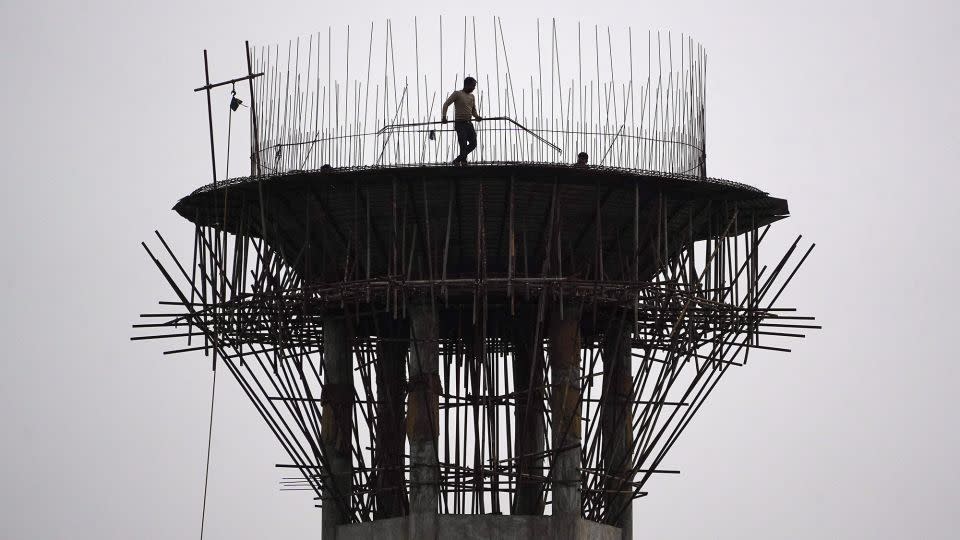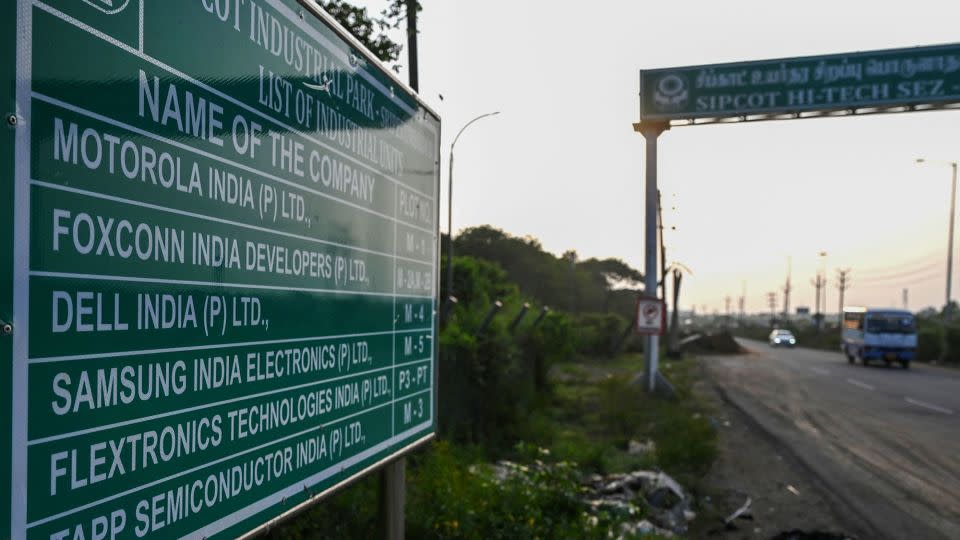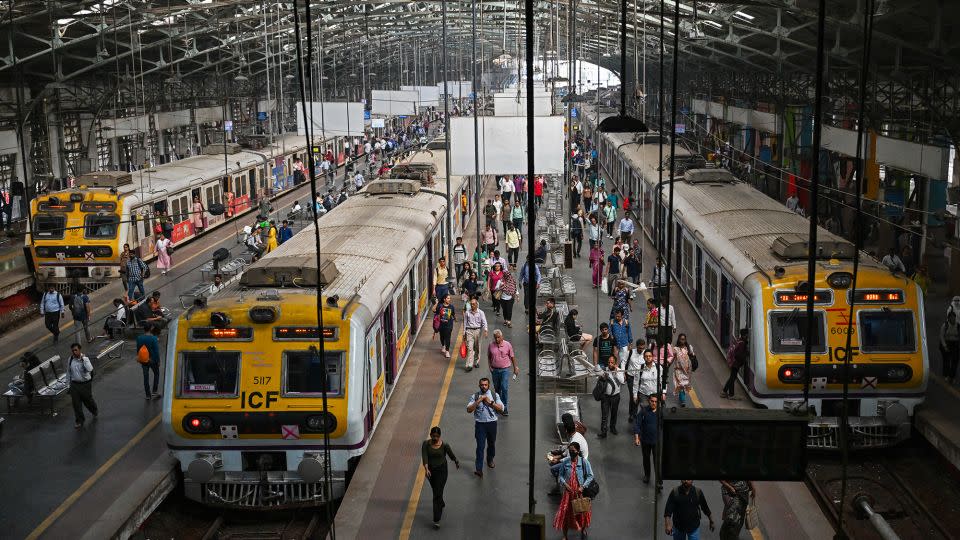Can India become an economic superpower? Here’s what the data says

Indians have started casting their votes in an election that’s expected to hand Prime Minister Narendra Modi another five years in office to steer the country’s rapid economic expansion.
Under his leadership, India is poised to become a 21st-century economic powerhouse, offering a real alternative to China for investors and consumer brands hunting for growth and manufacturers looking to reduce risks in their supply chains.
While ties between Beijing and the West are becoming increasingly frayed, India enjoys healthy relations with most major economies and is aggressively wooing large companies to set up factories in the country.
So, is the hype around Modi’s India, which remains a largely impoverished country, justified?

The quality of economic data in India can be unreliable, which makes it tough to evaluate the reality on the ground in the world’s most populous nation.
But by using data from official or authoritative sources, CNN has created five charts to show how the country has performed since Modi first rose to power in 2014, and to look ahead at the challenges the next leader will face in managing the world’s fastest growing major economy.
Still very poor
India’s economy was worth $3.7 trillion in 2023, making it the world’s fifth largest, having jumped four spots in the rankings during Modi’s decade in office.
The South Asian giant’s economy is comfortably placed to expand at an annual rate of at least 6% in the coming few years, but analysts say it should be targeting growth of 8% or more if it wants to become an economic superpower.
Sustained expansion will push India higher up the ranks of the world’s biggest economies, with some observers forecasting the country to become number three behind only the US and China by 2027.

However, India could do much more to raise its gross domestic product (GDP) per person, a measure of living standards according to which it ranked a lowly 147 in 2022, according to the World Bank.
According to Guido Cozzi, professor of macroeconomics at the University of St Gallen in Switzerland, there will be “trickle down effects on per-capita GDP” as the economy grows. But he cautioned that “trickle-down economics is not guaranteed to reduce income inequality, and policies that promote inclusive growth may be necessary.”
Building modern India
Much as China did more than three decades ago, India is beginning a massive infrastructure transformation by spending billions on building roads, ports, airports and railways. Meanwhile, private investors are building the world’s biggest green energy plant.
In this year’s federal budget alone, $134 billion was carved out for capital spending to boost economic expansion.
The results can be seen on the ground with furious construction underway across the nation. India added nearly 55,000 kilometers (around 35,000 miles) to the national highway network, an increase of 60% in the overall length, between 2014 and 2023. Infrastructure development has many benefits for the economy, including creating jobs and improving the ease of doing business.
In recent years, the country has also built a range of tech platforms — known as digital public infrastructure — that have transformed lives and businesses.
For example, the Aadhaar program, launched in 2009, has provided millions of Indians with proof of identity for the first time ever. The world’s largest biometric database has also helped the government save millions by reducing corruption in welfare initiatives.
Another platform, the Unified Payments Interface (UPI), allows users to make payments instantly by scanning a QR code. It has been embraced by Indians from all walks of life, from coffee shop owners to beggars, and allowed millions of dollars to flow into the formal economy.
In September 2023, citing a World Bank report, Modi said that thanks to its digital public infrastructure “India has achieved financial inclusion targets in just six years which would otherwise have taken at least 47 long years.”
Stock market superpower
The excitement around India’s growth potential is reflected in its stock market, which has been hitting record highs. The value of companies listed on India’s exchanges surpassed $4 trillion late last year.
India has two major exchanges: the National Stock Exchange of India (NSE) and the BSE, Asia’s oldest bourse formerly known as the Bombay Stock Exchange.
Thanks to the sizzling rally, the NSE has overtaken both the Shenzhen Stock Exchange and the Hong Kong Exchange to become the world’s sixth largest bourse, data from the World Federation of Exchanges showed in January.
Domestic investors, both retail and institutional, have been driving India’s stock market to unprecedented peaks.
According to Macquarie Capital, retail investors alone own 9% of India’s equity market value, while foreign investors are at slightly less than 20%. Analysts, however, expect foreign investments to pick up in the second half of 2024, once the election is out of the way.
Humming factories
The Modi government is aggressively trying to capitalize on the massive rethink underway among companies on supply chains. International firms want to diversify their operations away from China, where they faced obstacles during the pandemic and are threatened by rising tension between Beijing and Washington.

Asia’s third largest economy has launched a production-linked incentive program worth $26 billion to attract companies to set up manufacturing in 14 sectors, ranging from electronics and automobiles to pharmaceuticals and medical devices.
As a result, some of the world’s biggest firms, including Apple (AAPL) supplier Foxconn, are expanding their operations significantly in India.
Billionaire Elon Musk said last week on X that he is “looking forward” to meeting Modi in India, without giving a date. The Tesla (TSLA) boss is expected to announce a major investment in India soon, with the automaker reportedly scouring the country for a suitable location for its first Asian factory outside China.
Until two years ago, Apple would typically start assembling models in the country only seven to eight months after launch. That changed in September 2022, when Apple started making new iPhone 14 devices in India weeks after they went on sale.
Analysts have called the change in strategy a big win for Modi, as growing manufacturing ties with a US giant like Apple will in turn attract other global players in the electronics manufacturing ecosystem to India.
According to market research firm Canalys, up to 23% of iPhones will be made in India by the end of 2025, up from 6% in 2022.
Where are the jobs?
Still, India’s economy, much like its democracy, is far from perfect. If re-elected, Modi has to tackle the enormous challenge of creating hundreds of millions of jobs for a population that remains largely impoverished.

With an average age of 29 years, India has one of the youngest populations globally, but the country is not yet able to reap the potential economic benefits from its large, youthful population.
According to a report last month by the International Labour Organization, educated Indians between the ages of 15 and 29 are more likely to be unemployed than those without any schooling, which reflects “a mismatch with their aspirations and available jobs.”
Youth unemployment rates in India are now higher than global levels, it added.
The unemployment rate for young Indians with a graduate degree was over 29%, almost nine times higher those who can’t read or write, the report said.
“The Indian economy has not been able to create enough remunerative jobs in the non-farm sectors for new educated youth labour force entrants, which is reflected in the high and increasing unemployment rate,” it added.
For more CNN news and newsletters create an account at CNN.com

 Yahoo Finance
Yahoo Finance 